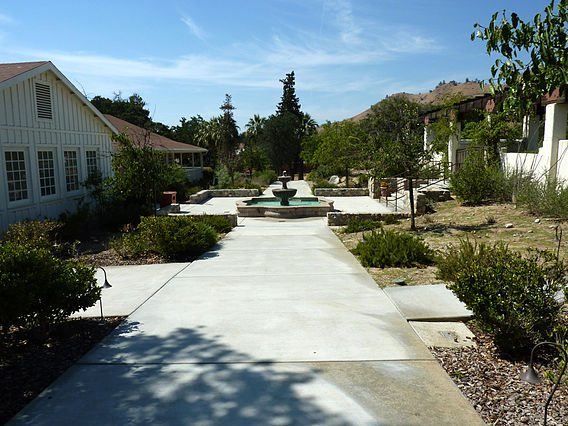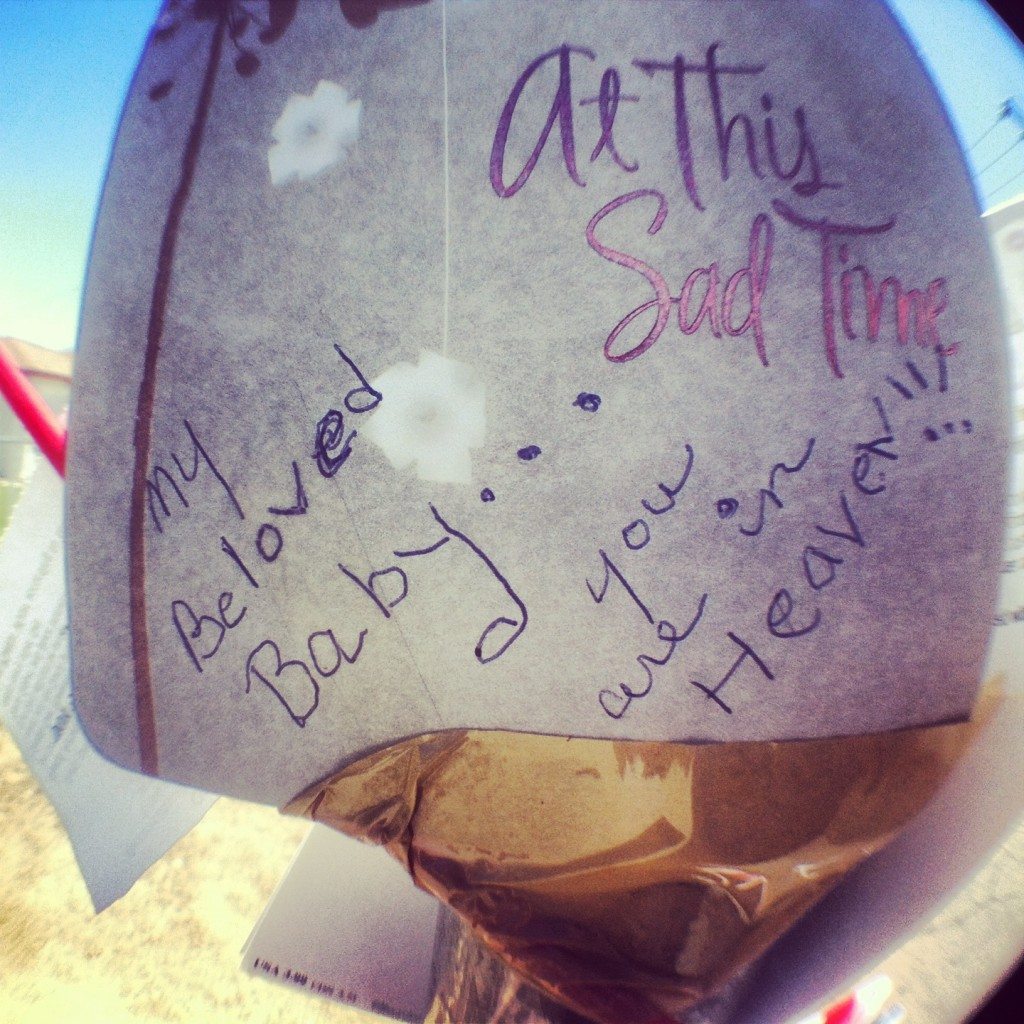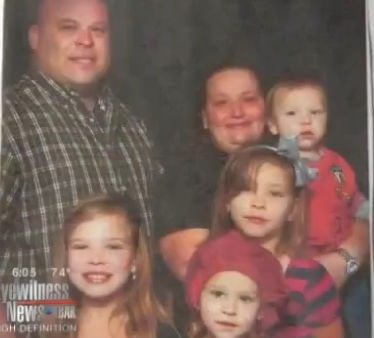In 1971, César Chávez moved his home and the headquarters of the United Farm Workers union from Delano to La Paz, a property encompassing 187 acres in the Tehachapi Mountains of eastern Kern County, California. Kern is the fifth-largest county in California with nearly 50% of its population of Mexican American descent. When he died in 1993, as was his wish, Chávez was laid to rest in La Paz.
On October 2012, President Barack Obama traveled to Kern County to establish the César E. Chávez National Monument to honor a leader determined to bring the concerns of Latinos to the forefront of the national political debate. Through his grassroots efforts to fight injustice in all its forms, Chávez became a national icon, inspiring political power through his slogan “Sí, se puede” (“Yes, we can.”).
What would César Chávez say if he knew that in the city of Bakersfield, less than 30 minutes from La Paz, Latinos are being systematically terrorized by Kern County police? Why are the police doing this, and why do Americans know the names Trayvon Martin and Rodney King, yet are oblivious to the names José Lucero and David Sal Silva?
Next week begins the murder trial in the death of Martin, whose name and photograph in a hoodie are easily recognized by Americans. The public’s familiarity with Trayvon came into the national consciousness when a number of high-profile African American citizens —including Reverend Al Sharpton, Reverend Jesse Jackson, and President Barack Obama— called for a full investigation.
King’s beating by officers of the L.A.P.D. is another such incident that gained national prominence due to the media’s release of a citizen’s videotaped footage. There was a national outcry for a criminal conviction, and even former Los Angeles Mayor Tom Bradley said at the time, “The men who beat Rodney King do not deserve to wear the uniform of the LAPD.”
That brings us to José Lucero and David Sal Silva, two 33-year-old men living in Bakersfield. José and David’s deaths resulted from the failure of leadership by Kern County Sheriff Donny Youngblood, an absolute disgrace to all the good men and women who wear the law enforcement uniform.
On December 18, 2010, Kern County Sheriff deputies Ryan Greer, Jonathan Juden, Daniel Willis, and Angelos Gonzalez went to José Lucero’s home, in response to repeated 911 calls from José claiming that a female friend was being assaulted in Lancaster.
José, a recovering drug addict who struggled with mental health issues, was living at the home of his elderly parents, Florencio and Lilia Lucero. Prior to that moment, reports indicated that he was on the road to recovery, but on that day he had relapsed. Witnesses testified that José appeared to be mentally unstable, either as the result of drug use or a prior head injury. The deputies decided to take José into custody for abuse of the 911 system.
Their arrest strategy was to pepper spray him, beat him with batons, and electrocute him with their Taser guns. The decedent’s elderly parents were horrified as they witnessed the entire incident.
Pepper spray causes intense pain, involuntary closing of the eyes, considerable tearing, as well as temporary paralysis of the larynx, which causes subjects to lose their breath.
The Taser X26 used by the Kern County deputies deliver a 50,000 volt charge. It uses compressed nitrogen to propel a pair of “probes” —aluminum darts tipped with stainless steel barbs connected to the X26 by insulated wires— toward a person at a rate of over 160 feet per second.
The manufacturer maintains that the full 50,000 volts do not enter the victim’s body; rather, it claims the X26 only delivers a peak voltage of 1,200 volts into the body, and an average current of 2.1 milliamps for 5 seconds. As a comparison, the electric chair administers 2,450 volts at about five amps for 20 seconds.
When the deputies became violent, José hid behind his father for protection, but the police ordered Florencio Lucero to step away, making José an easy target for two of the deputies to shoot him with their Taser guns.
The impact is as powerful as it is swift. The electrical impulse from a Taser instantly overrides the victim’s central nervous system, paralyzing the muscles and rendering the target limp and helpless. In addition, removal of the barbed probes requires hospitalization so that a doctor can remove the probes with a scalpel.
Medical experts report that just one five-second Taser jolt can set off irregular heart rhythms, leading to cardiac arrest. Individuals with mental problems, heart conditions, or abusing certain drugs have a higher risk of death. Once the steel barbs are lodged on the body, the officer can deliver continued electricity by pulling the device’s trigger again.
The following video shows a dozen police officers in training being shot —just once— with a Taser gun during a training session. Note that the barbs did not enter their skin but pierced a vest on their back.
This training video shows the painful result of just one Taser blow, even when the victim is held in the protective grasp of two colleagues. For safety reasons, most police department policies recommend no more than four jolts with a Taser.
According to data collected by Amnesty International, at least 500 people in the United States have died since 2001 after being shocked with Tasers. In November 2007, the UN Committee Against Torture released a statement saying “use of Taser X26 weapons, provoking extreme pain, constitutes a form of torture, and… in certain cases, it could also cause death.”
José Lucero, who was unarmed and could easily have been taken down by four police officers, was electrocuted with the Taser 29 times, within a six-minute period. 29 times. At five seconds per Taser, that is a total electrocution time of two minutes and 25 seconds! What kind of sick person would do that to another human being?
And if you think it couldn’t possibly get worse, the police pummeled José mercilessly with their batons 33 times, which, coincidentally, is the number of times Rodney King was clubbed by the police.
The typical police baton is simply a steel pipe, the use of which can have lethal consequences. Like brass knuckles, it can crack your head open, break your bones, and cause permanent injury to your bodily organs. In the case of Rodney King, the bones holding his eye in its socket were broken, and he suffered eleven broken bones at the base of his skull.
These four thugs masquerading as law enforcement officers certainly have nothing on the most heinous torturers of our times. Not surprisingly, their actions are aided and abetted by Sheriff Youngblood’s assurances that this “arrest” was handled in accordance with department policy.
Instead of excising this malignant tumor from the police force by filing criminal charges against all four deputies, Youngblood allows the cancer of police brutality to metastasize into the culture of the sheriff’s office by doing nothing.
José’s parents awaited the impartial results from the coroner’s office on the autopsy and cause of death. The Coroner’s Office is not limited to the examination of the deceased, but it also includes interviews with family members and other witnesses to assist with the determination.
Imagine the surprise of José’s parents when the coroner reported their son’s official cause of death was cardiac arrest following police restraint in association with methamphetamine intoxication.
But now get this. Who do you think is the Kern County Coroner?
Humor me. Just take one guess?
That’s right, Sheriff/Coroner/Public Administrator Donny Youngblood. All three positions were consolidated in 1995 by the Board of Supervisors. Coroner Youngblood was elected in November 2006 to wear these three hats, after retiring as a Commander in 2002, the culmination of his 30 years at the Kern County Sheriff’s department.
Coroner Youngblood decides the cause of death of the innocent victims who die while in the police custody of Sheriff Youngblood. Nice. It’s like Robert Louis Stevenson’s The Strange Case of Dr. Jekyll and Mr. Hyde coming to life in Kern County.
And for a judge and jury, this was just too ridiculous a lie to swallow.
In November 2012, after three-and-a-half weeks of trial and five hours of deliberation, a unanimous jury found that the County of Kern, the Kern County Sheriff’s Department, Deputy Ryan Greer, Deputy Daniel Willis, Deputy Angelo Gonzalez and Deputy Jonathan Juden were liable to Florencio and Lilia Lucero for the wrongful death of their son. For witnessing this brutality in their home, the court found negligent infliction of emotional distress resulting in an award of $4.5 million in total damages.
And what happened to the four deputies involved in this brutality? Nothing. According to Sheriff/Coroner Youngblood, they did nothing wrong, so all the deputies stayed on the force.
And that’s how on the night of May 7, 2013, Deputy Ryan Greer met David Sal Silva, the 33-year-old father of four beautiful young girls. One day Deputy Greer should explain to Makayla, Catelyn, Chelsea, and Eli why he and his gang of savages beat their father to death for simply passing out on the sidewalk after a very tough day.
Unlike Lucero, however, Silva’s in-custody death was seen and recorded by several eyewitnesses.
Ruben Ceballos awoke around midnight to sharp cracks and piercing screams. The 19-year-old rushed to the kitchen door and saw Kern County sheriff’s deputies beating David Silva in the head as he lay still on the ground.
“I saw two sheriff’s deputies on top of this guy, just beating him,” Ceballos said. “He was screaming in pain … asking for help. He was incapable of fighting back—he was outnumbered, on the ground. They just beat him up.”
And then there’s 34-year-old Salina Quair who was just leaving the Kern Medical Center, and saw David die. It turns out that David had sought help a little earlier from the substance abuse center at the Kern Medical Center. Unfortunately, a security guard saw that he was intoxicated and asked him to leave. David barely made it across the street before passing out.
Ironically, Salina called the police on the police.
Not only did Salina witness the savage execution and call 911, she also videotaped it with her phone and testified that the deputies were beating David to death with their batons when he was already unconscious.
“There’s a man laying on the floor and your police officers beat the shit out of him and killed him,” said Salina. “I have it all on video camera.”
She continued shouting into the phone:
“I am sitting here on the corner of Flower and Palm right now and you have one, two, three, four, five, six, seven, eight sheriffs. The guy was laying on the floor and eight sheriffs ran up and started beating him up with sticks. The man is dead laying right here, right now.”
Another witness, Jason Land, said he was so traumatized after seeing the murder, he didn’t know what to do. Jason said the police acted like “animals” when they brutally beat David to death right in front of him. He went to a local news station to tell his account. A few hours later, police arrested him and charged him with being on PCP, which was a lie, and according to Jason, the deputies tried to intimidate him to change his story about what he witnessed.
According to other witnesses, the first deputy to arrive found David passed out on the ground and gave him a knuckle rub on the chest and ordered him to wake him up. He got up on his knees, but being intoxicated he then fell on his face. How could anyone possibly interpret his inability to get up as “resisting arrest?”
So who did this deputy call for back-up to help him with this passed out unresponsive man resisting arrest? The back-up was a K-9 German Shepherd police dog released from his car in the attack mode that ferociously sunk his sharp teeth into David’s flesh, who was only wearing a t-shirt, shorts and sneakers. The autopsy revealed deep bites on his legs, arms, hands and torso. Even for days after the attack, you could see David’s blood all over the ground.
This unprovoked attack by a vicious animal must have suddenly awoken David from his drunken stupor because he began to fight for his life by trying to choke the dog before it killed him. And that’s when the other “law enforcement” officers arrived to savagely kick him and beat him over the face, head, and neck with their bone crushing steel batons.
The police department identified the seven deputies involved in David’s death as Sgt. Douglas Sword, Deputy Ryan Greer, Deputy Tanner Miller, Deputy Jeffrey Kelly, Deputy Luis Almanza, Deputy Brian Brock, and Deputy David Stephens. Two California Highway Patrol officers also responded, but haven’t been identified. All the officers are still working.
Silva’s uncle described what he saw after seeing his nephew’s body at the coroner’s office. “Bruised up face, chin, ear, busted lip, broken nose, black eye, all marks all over his face,” he explained.
It is completely absurd that these animals have not been arrested, strictly on the testimony of the many eyewitnesses to this completely unprovoked execution of an intoxicated man passed out on the sidewalk.
The cover up began immediately after the crime.
At 2 a.m. deputies began knocking on witnesses’ doors, detaining them for hours and demanding they turn over the footage on their cellphones. Is anyone really surprised that the most incriminating videos are missing from the mobile phones when they were finally returned?
Sheriff/Coroner Youngblood held a triumphant press conference on May 23 during which —contradicting the eyewitnesses— he said that only three deputies delivered blows to David Silva and none to the head or neck.
Sheriff Youngblood declared everything about Silva’s “arrest” was handled in accordance with department policy. Coroner Youngblood declared David Silva’s death as “accidental,” with the official cause of death listed as “cardiac hypertension.”
These absurd conclusions are no more believable then those made when José Lucero was tortured to death.
The day after Youngblood held that press conference, Silva’s father Sal went on Los Angeles radio to express his outrage: “Although they murdered my son, they say, well, he died of natural causes. Really? Don’t believe your eyes, don’t believe your ears, don’t believe the witnesses, don’t believe anything, but believe what the sheriff, our good sheriff, has to say. As far as I am concerned [the sheriff] is an accomplice to murder.”
Fortunately, in the case of David Silva there are numerous impartial and credible eyewitnesses who even without the help of their sabotaged videotaped footage, can recount in their own words what they saw and heard that night.
It’s sad that this evil lurks in the shadows of the César Chávez National Monument, and we all desecrate the memory of his life by doing nothing.
This week César Chávez is being honored in a series of events in Riverside, California culminating in the Saturday unveiling of a memorial and statue in his likeness. It will join existing statues there of other civil rights icons such as Martin Luther King, Jr. and Gandhi.
If Chávez’s life is to stand for something, it should stand as a beacon for our country’s citizens to take action against injustice, and especially against the evil residing in Kern County, which affects everyone, not only Latinos.
This two-minute video taken in May 1972 on Day 19 of Chávez’s 24-day hunger strike at Santa Rita Center in Arizona should be required viewing for all of us. In this video, César is joined by Coretta Scott King to link the solidarity and commitment of the civil rights movement to the cause of Latino farmworkers to organize an effort to recall then-Gov. Jack Williams and protest an Arizona law limiting the rights of farmworkers.
We see Coretta, César, and other African American leaders and Latinos joined together, singing hand in hand, committed to social change through peaceful non-violence. “Nonviolence is not inaction. It is not discussion. It is not for the timid or weak… Nonviolence is hard work. It is the willingness to sacrifice. It is the patience to win,” César Chávez reminds us. You also see the movement’s slogan,”Sí, se puede” (“Yes, we can”) on the walls, the same slogan President Obama adopted as the motto for his presidential campaign.
And to honor the last moments of José Lucero and David Sal Silva’s valiant fight for their lives against overwhelming odds with a posthumous eulogy, I dedicate to them “If We Must Die” by Jamaican-American poet Claude McKay. It was written about the 1919 Harlem race riots and served as a call to action to all African American men that it was time for them to stand up for their rights.
If We Must Die
If we must die, let it not be like hogs
Hunted and penned in an inglorious spot,
While round us bark the mad and hungry dogs,
Making their mock at our accursed lot.
If we must die, O let us nobly die,
So that our precious blood may not be shed
In vain; then even the monsters we defy
Shall be constrained to honor us though dead!
O kinsmen! We must meet the common foe!
Though far outnumbered let us show us brave,
And for their thousand blows deal one deathblow!
What though before us lies the open grave?
Like men we’ll face the murderous, cowardly pack,
Pressed to the wall, dying, but fighting back!
***
![]()
![]()








I am totally shocked that you people allow such beast to act as “officers of the Law”. Surely the Feds have been informed of such abuse of power !! oh wait, the Feds too do the same. So America the Free is no longer and the average citizen is fully unaware of their right being endangered by such pack of beast pretending to Serve and Protect…My condolences to all.. no wonder there is talk of revolution .. As Citizens , you deserve to be safe in your own country.. As Citizens..those elected into office should be serving the Citizens and not be self-serving greedy selfish malcontents. If these individuals or groups do not perform than you as Citizens you should remove them… Call out the Marines !!
It is murder! If 8 guys tazered a police officer, it would be murder so why do police always seem to get away with it? Regarding video of the police getting tazered… Where were the sticks to bash against their skulls? I did’nt see any… did you? Great post Charles thanks
Great post Charles thanks
Great work!
Your use of image and rich media really helps with the flow of the page to get your point across. Nice.
great article!
This is beyond unacceptable. I shouldn’t be shocked but I am. The details are horrendous. Those poor men.
This so makes my blood boil. More power to you Charles to continue speaking out against this brutality. And may we please long enough to see some justice for the poor victims.
stewartmar thanks for you comments!
It is my plesure to share what you have written. Keep writing so that more will hear.
Excellent post, thanks you so much !!
Great article!! thank you for sharing your passion.
Great Article!
[…] This article was originally published on LatinoRebels.com. […]
Yo are very inspiring! Keep up the good works!
Important post Charlie, thanks for sharing with me. I just shared with my community.
Finally! I must have read close to two dozen flaccid articles from the Bakersfield Californian and the LA Times. Neither of those papers is willing to call a spade a spade. Your article confronts the facts and issues head-on, the first piece I’ve seen to do that. Many thanks!